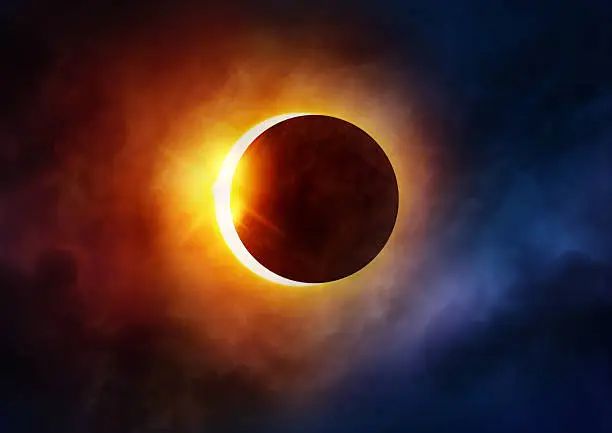The phenomenon of a total solar eclipse stands as one of the universe’s most captivating celestial events, creating a moment of awe and wonder for those fortunate enough to experience it. This occurs when the moon moves between the Earth and the sun, completely obscuring the sun from view and casting a shadow over the Earth. This shadow, known as the path of totality, offers a unique viewing experience for those situated within its confines. The forthcoming total solar eclipse on April 8, 2024, is anticipated to be the highlight of the year for astronomy enthusiasts, marking a significant event that will span across North America, including Mexico, the United States, and Canada.
Despite the global excitement surrounding this event, it’s important to note that geographical location plays a crucial role in eclipse visibility. For instance, observers in India will not be able to witness this 2024 eclipse. Such exclusivity underscores the rarity of total solar eclipses, which, while occurring roughly every 18 months, often manifest over the planet’s vast oceans or uninhabited regions, making land-based observation opportunities exceptionally scarce.
Understanding the Rarity of Total Solar Eclipses
The rarity of witnessing a total solar eclipse from any given location on Earth is profound. These celestial events occur when the orbits of the Earth and the moon align perfectly to cast the moon’s shadow upon the Earth, engulfing it in temporary darkness. However, the narrow path of totality, which for the 2024 eclipse is projected to be about 115 miles wide, significantly limits the areas from which the total eclipse can be observed. NASA estimates that it takes an average of 375 years for a specific location to experience two total solar eclipses, though this interval can vary greatly.
Varieties of Solar Eclipses
Solar eclipses are classified into three main types: total, partial, and annular. Each type provides a distinct viewing experience, largely dependent on the viewer’s location relative to the path of totality. During a partial solar eclipse, the sun and moon do not align perfectly, resulting in only a portion of the sun being obscured. An annular eclipse occurs when the moon is too far from the Earth to completely cover the sun, leaving a bright ring, or “annulus,” visible around the moon’s silhouette.
The total solar eclipse, however, is in a league of its own. It offers a fleeting opportunity to observe the sun’s corona, a phenomenon invisible under normal circumstances. The corona, the outermost part of the sun’s atmosphere, becomes visible as a radiant halo surrounding the obscured sun, creating a spectacle of unparalleled beauty and majesty. Annie Dillard, in her essay “Total Eclipse,” eloquently captures the profound difference in experience between observing a partial and a total solar eclipse, likening the latter to a deeply moving, transcendent experience far surpassing the former in its emotional and visual impact.
The Path Forward to the 2024 Eclipse
As April 8, 2024, approaches, anticipation for the total solar eclipse continues to build. This celestial event presents a unique opportunity for millions across North America to witness a rare astronomical phenomenon. The path of totality, stretching across multiple countries, invites a sense of unity and shared human experience in the face of the universe’s vastness and mystery.
For those outside the path of totality or in regions not favored by this eclipse’s trajectory, modern technology offers alternative means of participation, including live streams and broadcasts, ensuring that the wonder of the eclipse can be shared by a global audience. Moreover, this event serves as a reminder of the importance of preserving dark skies and reducing light pollution, not only to enhance the beauty of celestial events like solar eclipses but also to protect our night skies for future generations.
In preparation for the 2024 total solar eclipse, individuals and communities within the path of totality are encouraged to plan ahead, considering factors such as weather forecasts and viewing locations, to maximize the experience of totality. Educational programs and resources are also being developed to enrich public understanding and appreciation of this and other astronomical events, fostering a deeper connection between humanity and the cosmos.
In conclusion, the total solar eclipse of April 8, 2024, represents not only a significant astronomical event but also a moment of collective wonder and reflection on our place within the universe. As we look forward to this extraordinary event, we are reminded of the beauty and rarity of such celestial phenomena and the enduring human quest to understand the cosmos that surrounds us.

